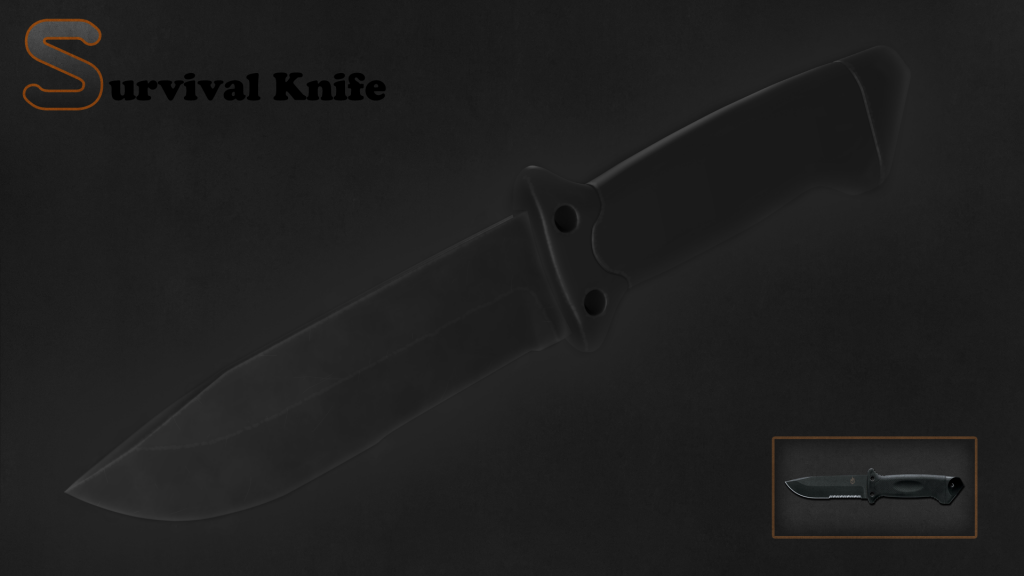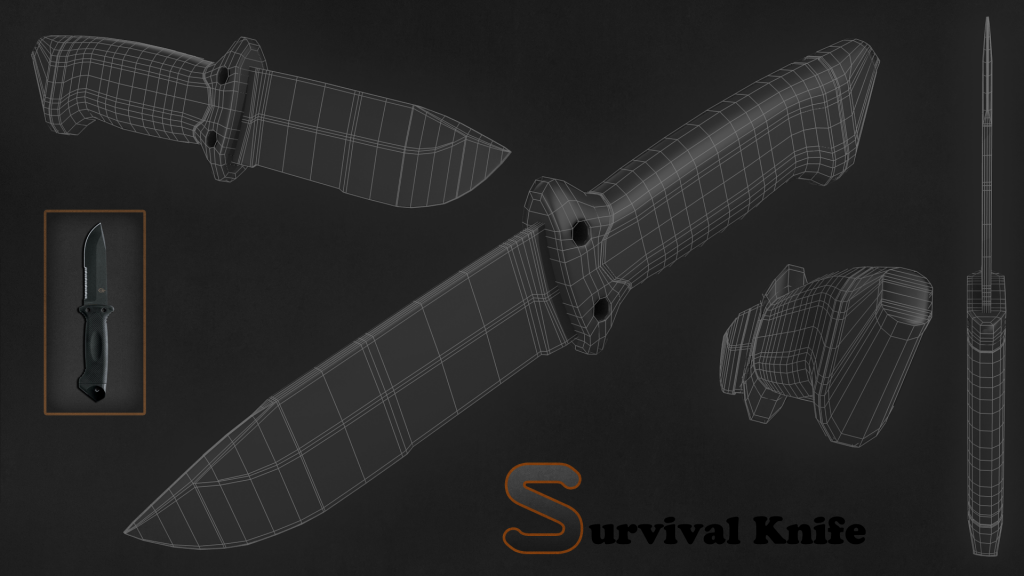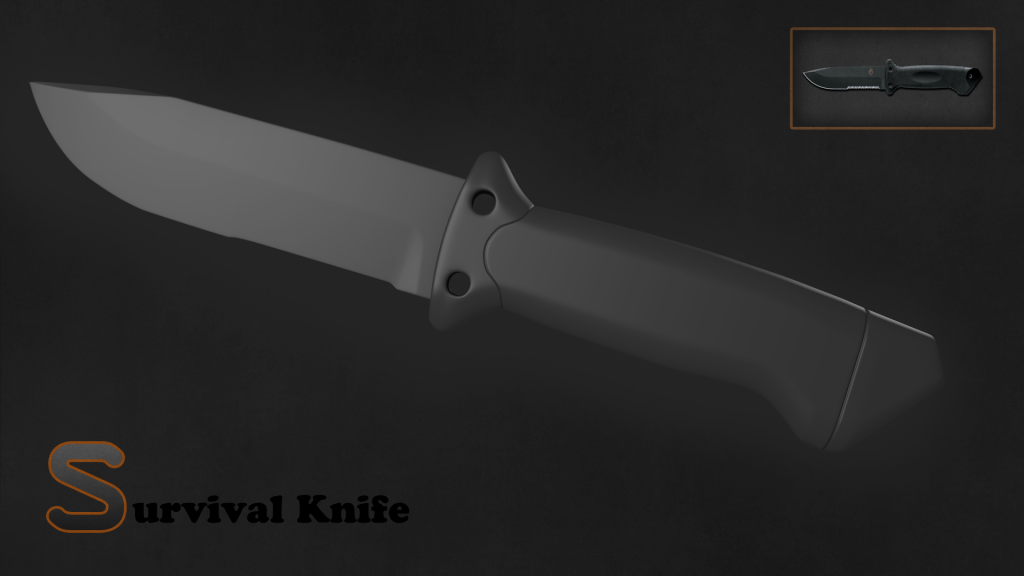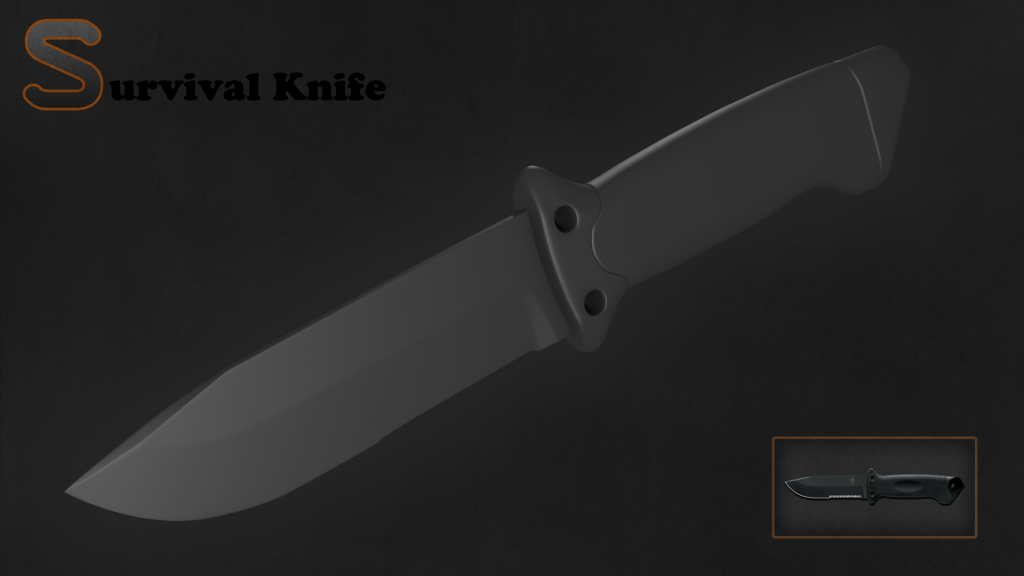The BRAWL² Tournament Challenge has been announced!
It starts May 12, and ends Oct 17. Let's see what you got!
https://polycount.com/discussion/237047/the-brawl²-tournament
It starts May 12, and ends Oct 17. Let's see what you got!
https://polycount.com/discussion/237047/the-brawl²-tournament
Improve metal scratches?
I modeled this knife today. The edgeflow is messed up I'm not good at modeling blades I find them very difficult to get right, The handle has so many loops because I planned on making the oval groove but never got around to doing it and though it is easier to make it using floating geometry which I will probably do.
Things I need help with:
edgeflow - At the moment it's pretty messed up.
Blade and Hilt Scratches - How would you paint scratches/wear and tear?
Paint-Over Render (minor scratches when I try and add more it looks blurry

Clay and Wireframe Renders



Things I need help with:
edgeflow - At the moment it's pretty messed up.
Blade and Hilt Scratches - How would you paint scratches/wear and tear?
Paint-Over Render (minor scratches when I try and add more it looks blurry

Clay and Wireframe Renders



Replies
Alternately, use a square brush with a slight rotation/size jitter. Paint in rough/sloppy scratches, then add a layear mask to refine.
Survival Axe -
https://www.google.de/search?q=gerber+lmf&source=lnms&tbm=isch&sa=X&ei=nALGUpCZN4PTtAbGloHABg&ved=0CAcQ_AUoAQ&biw=1920&bih=968#q=gerber+lmf2&tbm=isch
You can get texture example there, too.
Right off the bat tho, i'd say check your padding when you bake down the normals (or anything for that matter)
You seem to have quite a few wasted polygons on the axe head; many of the inner polygons aren't adding anything to the shape, let alone the silhouette.
Blender Bake:
Xnormal Bake & Settings:
I never actually use xnormal, i base in the default max Render To Texture thing and never have any issues :S
Also, if the handle has a clear coat varnish, or is stained and sealed, the specular and gloss should be fairly uniform. If it's unfinished, specular and gloss would still be uniform, but would increase in areas with heavy use (polished where the hands would rest most often).I'd also decrease the contrast of the specular for the metal bits. The ware pattern is a little too homogeneous and the contrast between areas in the specular makes that stick out. You could think about what you can add to break up the material a bit: some paint on the axe head, a grip on the handle, and/or amateur carvings in the wood of the handle.
Final result -
Explode the model along with the matching high poly and bake out the parts separately and combine them.
As for the scratches, use a very small brush and do about 4 or 5 layers with different types of scratches with varying opacity's.
So you will have light scratches, barely visible scratches, edge scratches, dent scratches and what not. Then you adjust them based upon visual preference.
Keep the scratches on a different layer then copy them over to the specular channel to make them pop out more without having to go 100% white within your diffuse.
You can grab either the yellow or gray part, fill with whatever color and bam instant scratches mask you can use in a ton of ways/places